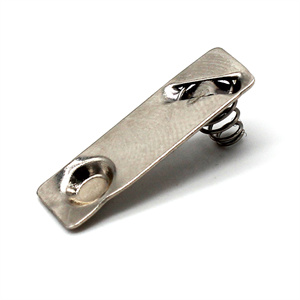Electrical contacts are suitable for blackening treatment. Blackening treatment is a chemical surface treatment method that improves the corrosion resistance, wear resistance, and decorative properties of a metal by forming an oxide film on its surface. For components such as electrical contacts that require frequent contact with current, improving their corrosion resistance and wear resistance is particularly important.
The blackening treatment of electrical contacts is a common and important surface treatment method, which has the following obvious advantages and functions:
Reduce oxidation and wear:
Reduce the oxidation rate of contact surface, and reduce the increase of contact resistance and poor contact caused by oxidation. At the same time, the blackening treatment can increase the surface hardness and reduce the wear of the contact in the frequent opening and closing process.
Improved electrical contact performance:
Make the contact surface more flat and uniform, reduce the contact resistance and improve the stability and efficiency of current conduction.
Improve heat dissipation:
The black surface has good thermal radiation characteristics, which helps the contact to dissipate heat better during operation and reduce the impact of temperature rise on electrical contact performance.
Identification and distinguishing:
The unique black appearance helps quickly identify and distinguish electrical contacts of different types or functions in complex electrical systems.
In the high-voltage circuit breaker in the power transmission and distribution system, the electric contact subject to blackening treatment can maintain good performance under high voltage and large current conditions, and reduce the probability of failure; In small relays in electronic equipment, blackened electrical contacts improve the service life and stability of the equipment.
Improving corrosion resistance: Electrical contacts are prone to exposure to various environmental factors such as moisture, dust, etc. during use, which may lead to contact corrosion. Blackening treatment can form a dense oxide film on the surface of the contact, effectively isolating air and moisture, and improving the corrosion resistance of the contact.
Enhanced wear resistance: Electrical contacts generate friction during contact and separation, and prolonged friction may lead to contact wear. Blackening treatment can form a hard oxide film on the surface of the contacts, improving their wear resistance and extending their service life.
Improving appearance: Blackening treatment can alter the appearance of electrical contacts, presenting a uniform and aesthetically pleasing black color. This can improve the appearance quality of some electrical contacts that need to be exposed.
However, it should be noted that blackening treatment may have a certain impact on the conductivity of electrical contacts. Therefore, before conducting blackening treatment, it is necessary to fully evaluate its impact on the conductivity of electrical contacts, and weigh and choose according to the actual situation.
Electrical contacts are suitable for blackening treatment to improve their corrosion resistance, wear resistance, and appearance quality. However, before processing, it is necessary to fully evaluate its impact on conductivity and select appropriate processing techniques and parameters.
